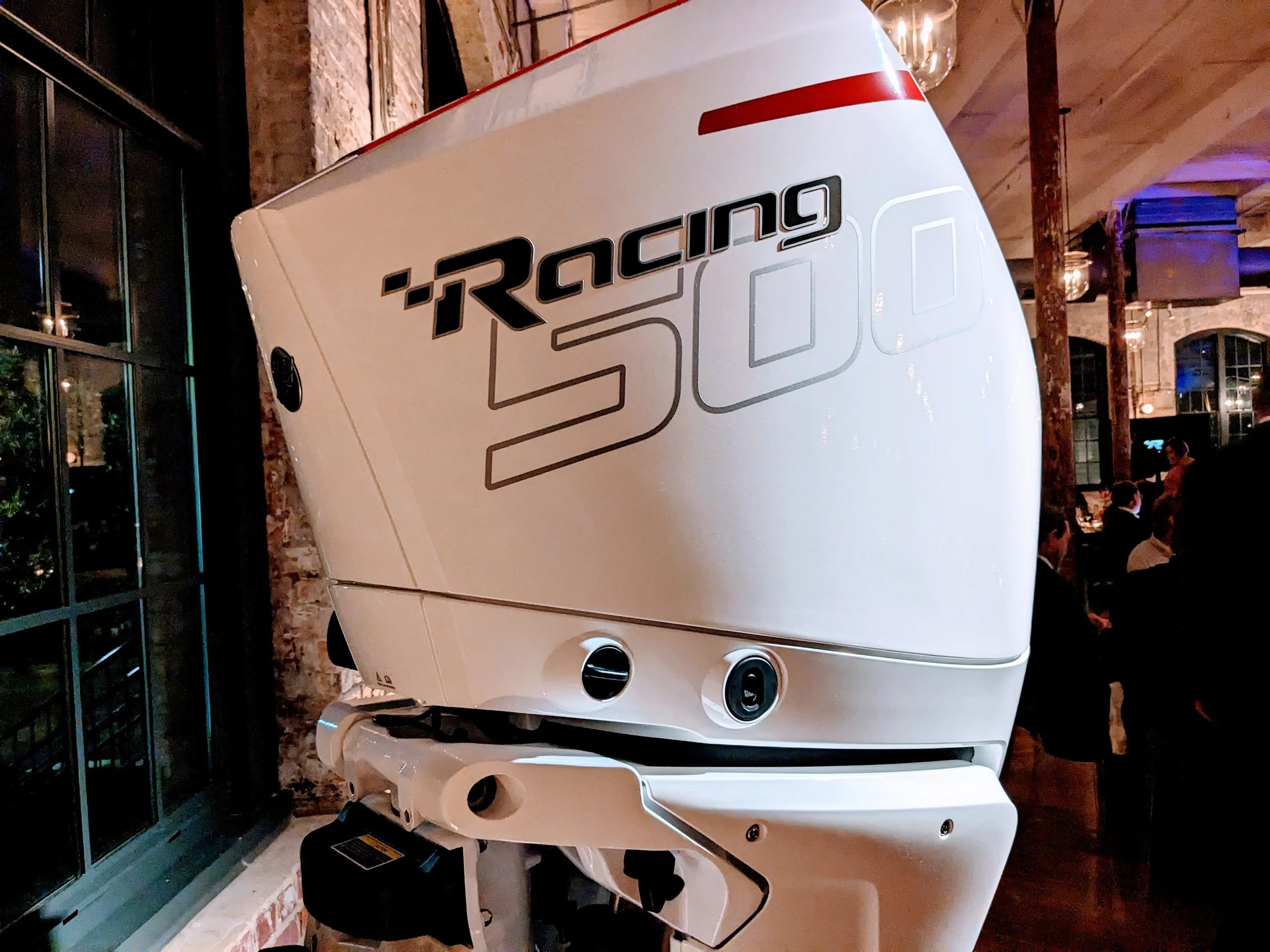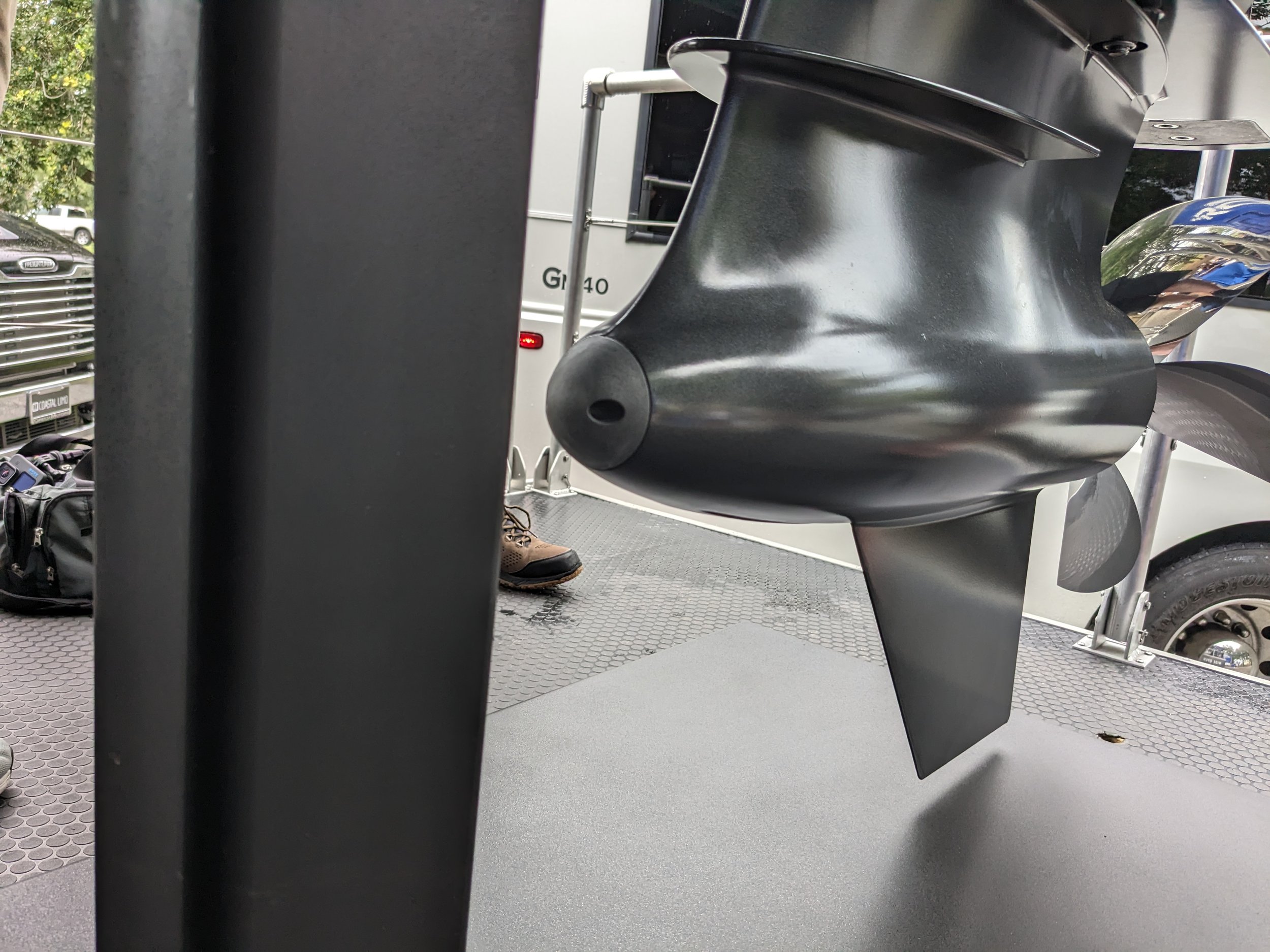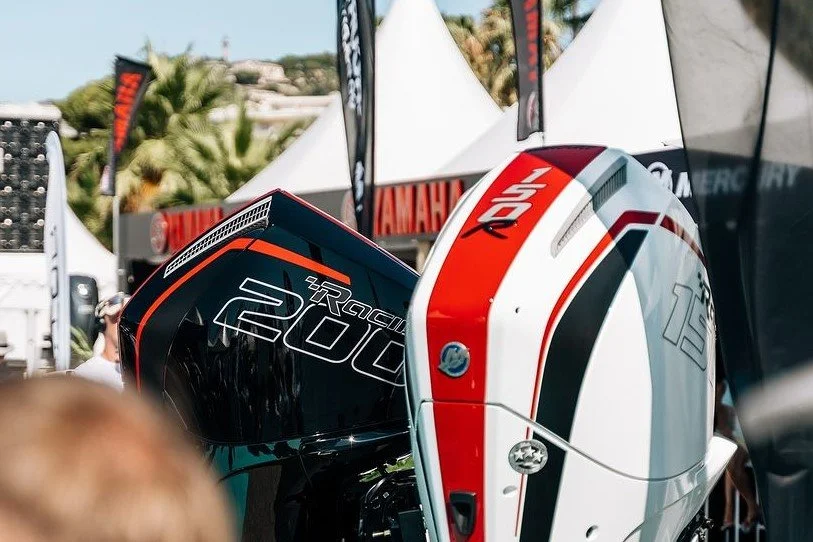Mercury Racing and Trickle Down Technology in Marine: The Future of Outboards
One of the main selling points of any racing program is the trickle down technology effect, where you test new technology on the race course and eventually apply it to consumer products. When Mercury Racing launched the 500R, in some ways it was a case of trickle down technology. The supercharged 450R was tested in the 450R Factory Class for two seasons and in the real world with consumers to inform changes and upgrades. Mercury Racing used the big M8 drive to help design the new R-Drive gearcase on the 500R to handle the extra power and improve performance. With the 500R, can we forecast what Mercury Racing or Mercury mainline might be thinking in the future? What technology might we see make it’s way down the horsepower chain?
Even though the Mercury Racing 500R had some serious upgrades within the engine and with the mid section as well, there was nothing more interesting than the gearcase. 450 and 500 hp is a glorious amount of power in an outboard, and when the gear case is surfacing that is a serious amount of strain on the propshaft. Mercury Racing addressed this with the R-Drive, coming in two configurations, the R and the R Sport. Overall a much larger unit than the 5.44 and Sport Master, the R features a longer torpedo, and a 5.9” case that accommodates up to a 17” diameter prop, with two skeg designs for specific applications. Both have optional cambered skegs for single engine applications.
The R-Sport has a longer broader skeg for directional stability while surfaced, the R-Sport is much improved in acceleration and turning as the spray plate seems to avoid ventilation in most circumstances, from what I experienced in test runs. Another novel feature is the adjustable cap on the nose of the R case. This technology intrigues me because with smaller engines we see the choice between the torque master and sport master is limited to the particular engine. You can only get a sport master in a mechanical 250R, the 300R and the 400R. If you want a 250 or less with a low water pickup, you have to modify the torque master or the 4.88” case.
For Mercury, could they offer a new “torque master” with an adjustable water intake cone similar to the R drive? In manufacturing it can sometimes be advantageous to harmonize products for efficient production and offer variations. Finding a design that is equally happy at 90+ MPH, as it is on a slower boat is a bit of a challenge, but an adjustable cone is a potential solution. The after market for custom nose cones is a bit too “do it yourself” for many.
Forced induction is all the rage in automotive, as almost every category of car from luxury, performance, and SUV has 4 cylinder turbo engines available. Efficiency and fuel consumption are the benefits. Could we see more forced induction in the smaller engines? It only works when the weight and power tradeoff is there. For the 3.0L 150 and 4.3 V6 engines, there is no benefit. But for the 2.1L 115 HP, the tradeoff might be there, a sub 400 Lbs 200+ HP engine could be interesting. I’ve always thought a mild hybrid would work well with outboards, even more efficient than forced induction without adding much complexity.
With the big 400R we see the AMS (advanced mid section) with a beefier one on the 500R called ACR (advance racing core), that has rugged guide plates. The AMS and ACR are a way to reduce noise vibration and harshness. The cost is a great deal of movement up top; the powerhead is isolated. For small engines, I feel the opposite is needed, NVH is overrated in small four strokes on the water and crisper steering with durable mounts is way more important. Semi solid mounts provide less movement and vibration is not an issue. Like the big engines, I can see more steering integration coming for the smaller engines. Mercury Racing has all but eliminated single engine side mount steering, where steering cylinders are attached to the powerhead by a wingplate, on the CMS 300R and it was never available on the 250R. Robust and safe steering was necessary in offshore applications and for many performance boats. Front mount is great for balanced steering but arguably not as robust.
I can see full electric front mount systems as OE offerings in the next generations of updates. Other manufactures, like Yamaha, are already rolling this out. The Mercury Verado line has always had electro hydraulic steering, but I think a simple electric actuator system will find its way on the mid range HP outboards as standard fairly soon. Precise steering and safety have to be the number one criteria. Gearcase design, cambered skegs and bullet shape are all “trickle down” design technologies from racing. Gearcase design, height and prop design all greatly affect performance, steering torque, and overall safety.
Back in the day with mechanical steering, the wrong setup and running the engine really high, you could have a dangerous amount of steering torque. With a cambered skeg, where the skeg is shaped to counter propeller torque, the right prop and engine height, steering torque can be reduced drastically. With hydraulic steering on the right setup, you can take your hand off the wheel at high speed; although never recommended.
Other things we see in the 500R, like humidity compensation and range optimization technology will trickle down. We already have range optimization in smaller engines but I think more technology will be available to reduce low speed emissions and fuel optimization at speed.
As I have always argued, a performance oriented V6 from Racing would be a killer engine in the 200, 225 HP and 250 range. Mainline Mercury really made a mistake with offering the 200 and 225 ProXS as a V8, they would be far more compelling as V6 engines. I can see integrated steering on mainline Mercury outboards 150 HP and up. And, I do think a more universal gearcase in the 200 to 300 range could be interesting, where the cone has an adjustable intake like the R Drive, for low water pickup. When you see how integrated the V12 Verado is, that provides a glimpse at the future.
The future is efficient and integrated. With full command of the big power outboards, Mercury Racing would be wise to look at the V6 and even smaller engines to grow sales. Mainline Mercury will probably start integrating steering and engine optimization technology in the next generations of their four stroke platforms in the mid HP range. This could create true plug and play outboards. We may see mild hybrids as a future option on the V12 that would reduce emissions and improve range, while adding torque, eventually trickling down.













